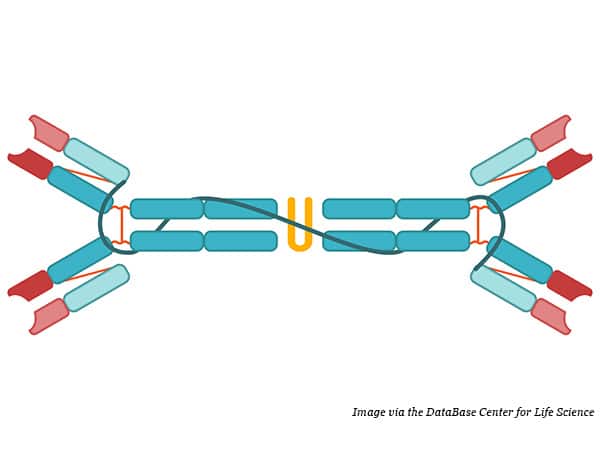Genomic Insights Drive Pediatric Cancer Research Forward
Cancer is often described as a disease of old age, but over 15,000 children are diagnosed with cancer each year in the United States. While pediatric cancers tend to have higher survival rates than many adult cancers, cancer remains the leading cause of disease-related mortality in children, accounting for almost 1,800 deaths each year.
Precision medicine is a growing field of cancer medicine that aims to tailor a patient’s treatment to their tumor’s molecular features. Analyzing the genetic features of various cancers can help identify therapeutic targets, as well as understand the factors that might influence clinical outcomes.
While such approaches have shown some success for treating adult cancers, the development of precision medicine strategies for pediatric cancers has been challenging, in part because most pediatric patients develop rare cancers, thus limiting the size of disease cohorts for detailed analysis. Additional challenges include limited longitudinal studies, a lack of reliable biomarkers, the presence of distinct, relatively underexamined genetic alterations, and lower tumor mutational burdens compared to adult tumors, curtailing potential treatment options.
Researchers continue to study the molecular features of childhood cancers to uncover potential therapeutic opportunities and drive pediatric cancer research forward. Here, we discuss three recent studies that utilized genomic data to reveal novel insights into the development and progression of childhood cancers.
A Data-sharing System for Pediatric Genomics
To help promote pediatric cancer research, researchers at St. Jude Children’s Research Hospital developed St. Jude Cloud, a cloud-based repository of genomic data from over 10,000 pediatric cancers from both retrospective and prospective studies. The database includes three interconnected applications, including a collection of raw genomic data, a portal of curated somatic variants, and published pediatric cancer landscape maps. The cloud-based design of St. Jude Cloud facilitates data sharing by removing many of the logistical barriers of other existing genomic repositories.
A recent publication in Cancer Discovery, a journal of the AACR, details this new resource and demonstrates its utility for pediatric cancer research. As one example, the authors of the article used RNA sequencing data from the repository to generate a reference map for classifying pediatric cancers into molecular subtypes. This method allowed them to determine the subtype of an unclassified pediatric acute myeloid leukemia, as well as to identify a potentially actionable fusion oncogene. Additionally, the authors utilized St. Jude Cloud to characterize the mutational landscapes of various cancer types, a key step toward understanding cancer development and identifying therapeutic opportunities.
“In summary, St. Jude Cloud offers the largest cloud-based genomic data resource for pediatric cancer,” the authors wrote. “With continued expansion of data content, development of new applications, and exploration of federated data sharing on this data-sharing ecosystem, we anticipate that it will serve as a key community infrastructure to accelerate research that will improve the precision of diagnoses, efficacy of treatments, and long-term survival of pediatric cancer and other childhood catastrophic diseases.”
Identifying Inherited Pathogenic Variants in Childhood Neuroblastomas
Neuroblastoma is a pediatric cancer arising from the sympathetic nervous system. The vast majority of cases are thought to arise sporadically, but recent studies have suggested that many of these patients may harbor a rare germline variant in a cancer predisposition gene. However, the heritability of such germline variants remains largely unknown due to limited parental data in prior studies.
In a study presented at the AACR Annual Meeting 2021, researchers analyzed germline DNA sequences from 556 pediatric patients with neuroblastoma and one or both of their biological parents in order to assess the heritability of pathogenic variants.
The analysis identified 93 pathogenic or likely pathogenic germline variants in known cancer predisposition genes across 90 patients, representing 16 percent of the cohort. Sequencing data from biological parents were available for 85 of these patients, which revealed that 94 percent of the identified germline variants were inherited. Furthermore, the presence of a pathogenic or likely pathogenic germline variant in a cancer predisposition gene was associated with worse outcomes, an observation that could be used to predict prognosis or guide treatment decisions.
“This large-scale study allowed us to identify rare pathogenic germline variants and—for the first time—assess whether these variants are inherited or acquired de novo,” said the study’s first author, Emily Blauel, MD, in an AACR press release about the study. “The results from this study have large implications for patients and their families, and they may aid genetic counseling.”
Uncovering Mutations Associated with Relapsed Pediatric Leukemia
Relapsed acute lymphoblastic leukemia (ALL) is the second deadliest cancer in children, due in part to the paucity of targeted therapies for relapsed disease. Understanding how this cancer relapses may uncover potential strategies to treat the disease, or to prevent or foresee relapse.
Last year, the AACR journal Blood Cancer Discovery published its first paper, in which researchers analyzed 92 cases of pediatric ALL and identified 50 genes that were commonly mutated in relapsed ALL. Some of the identified mutations, such as those in CREBBP, NOTCH1, and RAS, were found in ALL subclones at diagnosis and enriched at relapse, whereas others, including those in NCOR2, USH2A, and NT5C2, were only present at relapse, suggesting that these mutations may have arisen in response to treatment. Furthermore, the researchers developed a technique that was able to detect the emergence of such relapse-associated mutations earlier than conventional methods. Early detection could allow clinicians to better monitor patients and adjust treatment accordingly.
In addition to identifying relapse-associated mutations, the researchers also found that most cases of presumed secondary ALL were, in fact, relapses from the primary leukemia. This distinction is important, as secondary leukemias are treated differently than relapses.
Another key observation was that a subset of ALL cases prone to multiple relapses exhibited hypermutation, defined as having at least 85 mutations. Hypermutation in relapsed ALL was associated with increased expression of neoantigens, hinting at a potential susceptibility to immunotherapy.
“Our study provides a tapestry of the genetic changes in pediatric ALL and how these genetic changes alter over time as the patient is treated and as the leukemia relapses,” said the study’s lead author, Charles Mullighan, MD, in an AACR press release. “This information has the potential to be translated into new strategies for early detection of relapse and the development of treatments to prevent clinical occurrence.”



